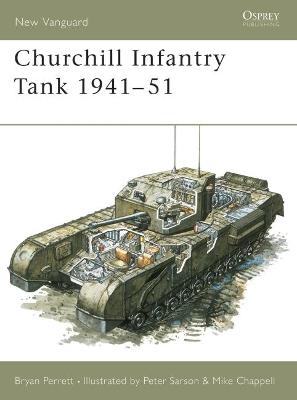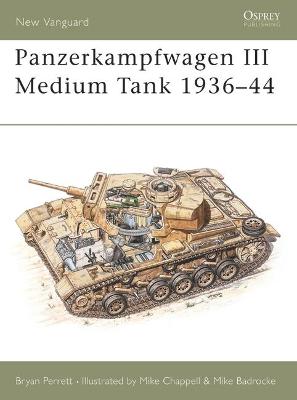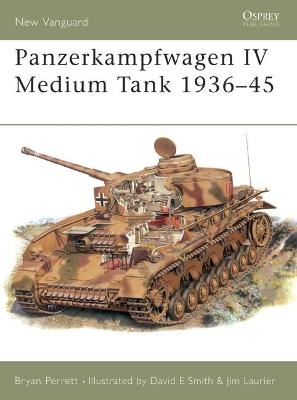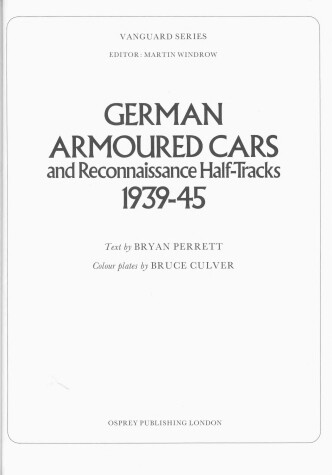Osprey New Vanguard S.
6 primary works
Book 4
The Churchill was undoubtedly one of the most successful British tanks of the Second World War. Although it suffered from being underarmed, a defect common to most British armoured vehicles of the period, it was nevertheless loved by its crews: its cross-country ability was unrivalled and it was less inclined to 'brew-up' from a direct hit than the Sherman. It was also adaptable. Modified Churchills played a crucial part in the initial D-Day landings and in the subsequent advance through France. Bryan Perrett traces the life of this slow-moving but effective and respected tank from its initial inception through till its eventual obsolescence.
Book 26
The light tanks of the Panzerwaffe make a fascinating subject for technical and historical study. Operation Barbarossa was the light tanks' swan song: thoroughly experienced and at the peak of self-confidence, the Panzergruppen brought Moscow to almost within Hitler's grasp. However, the effectiveness and popularity of the light panzers was only proven because Hitler's Panzerwaffe (despite their technical excellence) was poorly equipped. The critically short supply of the Panzerkampfwagen III and IV placed an ever-increasing onus on the light tanks that filled out the Panzerwaffe's ranks during the glory years. In this book, Bryan Perrett examines the evolution of the PzKpfw I and II.
Book 27
Panzerkampfwagen III Medium Tank 1936-44
by Bryan Perrett and Byran Perret
Published 26 February 1999
During the glory years of blitzkrieg the PzKpfw III was the only weapon in the German tank arsenal that really counted. Like Napoleon's vieux moustaches, it did not merely witness history in the making - it made it, from the Channel to the Volga, and from the Arctic to the North African desert. It was the PzKpfw III that brought Hitler to the gates of Moscow and the closest to achieving his wildest dreams. This detailed study delves into the development and employment of the PzKpfw III, as well as its organisation and battlefield experience, illustrated by an examination of the battles in which it took part.
Book 28
The PzKpfw IV was essentially an integrated support weapon, and its involvement in WWII is difficult to separate from the story of the Panzerwaffe as a whole. A powerful and robust fighting machine, the PzKpfw IV was supplied to various allies of Germany, and remained in service with the Spanish and Finnish armies for some time after the end of the war. In the glory years of 1942-43 the PzKpfw IV was the mainstay of the Panzerwaffe, and Bryan Perrett's in-depth examination of this prolific fighting machine does full justice to the fascinating history and technical details of one of the greatest armoured vehicles ever to have fought.
Book 29
German Armoured Cars and Reconnaissance Half Tracks, 1939-45
by Bryan Perrett
Published February 1982
Flexibility, mobility, and the ability to effectively communicate were all key requirements that the units operating armoured cars and reconnaissance half-tracks demanded - and that were also crucial to the Panzerwaffe and German Army as a whole. Bryan Perrett's treatment of the development and history of German armoured cars and recce vehicles fully accounts for the crucial role that such units, and more importantly their vehicles, played during the course of World War II. Full orders of battle are also given, along with technical details and specifications of the vehicles assigned to particular units.
Book 34
Originally the German assault gun was designed as an infantry support weapon, but the changing conditions of the battlefields of the Second World War forced it to adapt to perform a number of different roles, most importantly as a tank destroyer, although the infantry support role was never wholly discarded. If the much-glamorised Panzer divisions were the sword of the German army then the assault gun and tank destroyer units were its shield. As the Panzers' grip on the battlefield began to fail, though, it was left to the assault gun and tank destroyer crews to take up the burden.





